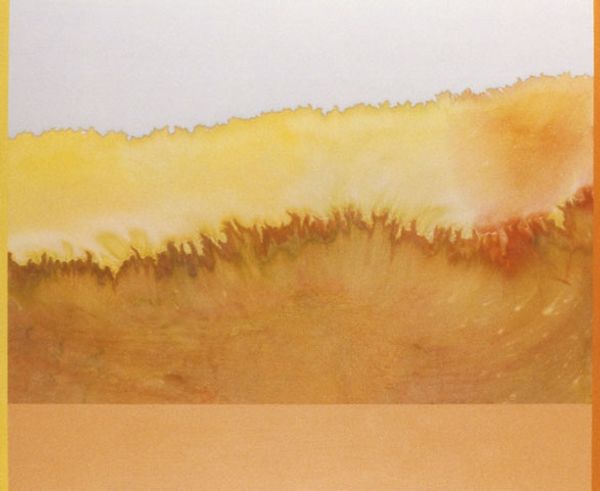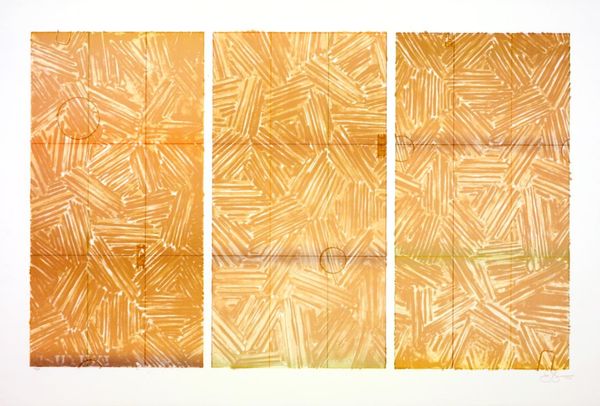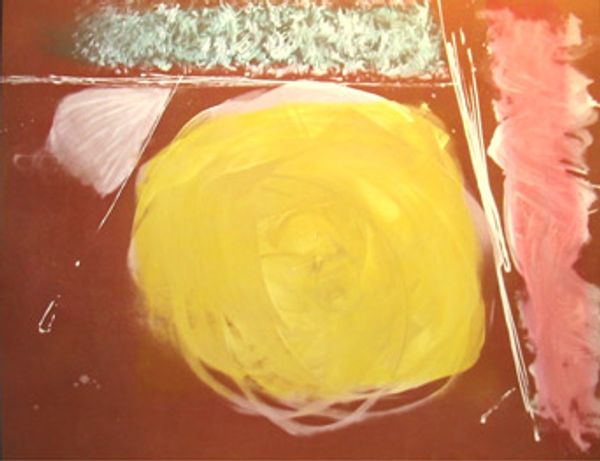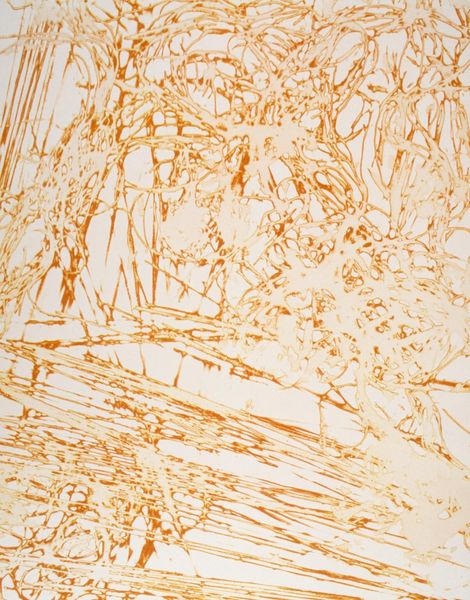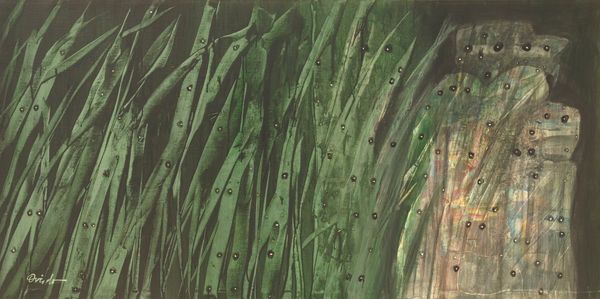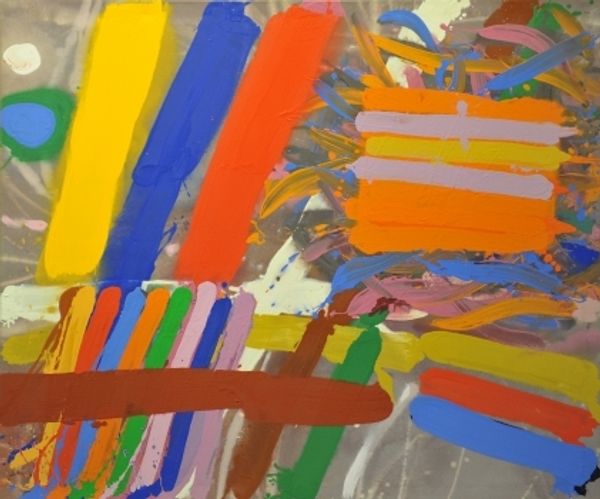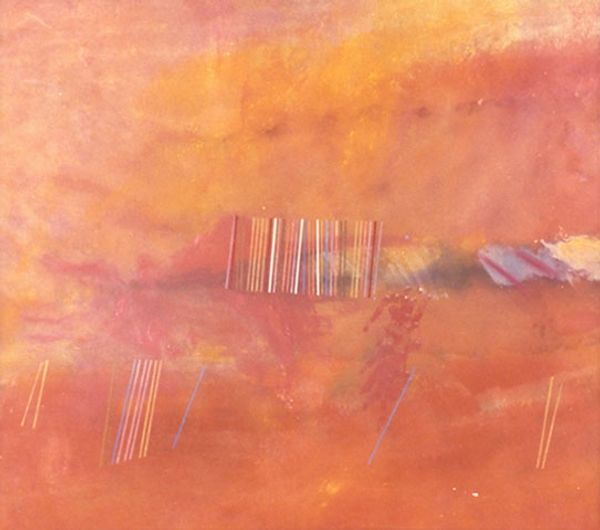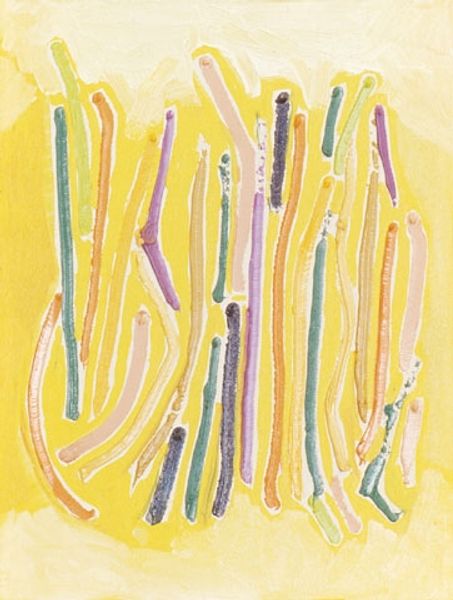
Copyright: Albert Irvin,Fair Use
Curator: Albert Irvin's "Cathay," painted in 1979, immediately strikes me as an explosion of summer sunlight rendered in acrylic on canvas. The energy feels almost…visceral. Editor: That's funny, the materiality actually softens it for me. You can see the clear texture of the brushstrokes and pooling of paint, almost fighting the boldness of the hues. Makes me wonder about Irvin’s process – did he build this up layer by layer, or was it more impulsive? Curator: Interesting point! Irvin had a deep connection to color, exploring its symbolic and emotional resonance throughout his career. Looking closely, the way he positions these colors feels intentional; notice how the bright yellow almost descends upon the orange forms, as if a cleansing light. Editor: And speaking of those orange forms—look at the drips and how they bleed into that foundational red line. I see a deliberate tension there: the clean lines and blocks versus the fluidity of the acrylic and the suggestive textures. The tension makes me question how his artistic production relates to the abstract expressionism movement. Curator: Absolutely. I believe he found ways of synthesizing Fauvist color principles and Abstract Expressionist scale into his own, unique, visual language. The term “Cathay” evokes an almost mythical East. Perhaps Irvin was aiming to tap into the romantic associations surrounding that name. A far away location…a sense of exoticism. Editor: Or perhaps a nod to trade routes! "Cathay," as you noted, brings a place of cultural exchange to mind. In a work so reliant on material application and layering, might there be a comment on how cultures and materials interact, too? It's also worth considering that acrylics themselves, a relatively modern medium, become a character in his representation of “Cathay.” Curator: A compelling thought – a reminder that even abstract forms can carry coded information rooted in material and making! Editor: Exactly! A conversation across time expressed in vibrant pigments and dynamic forms. I am still amazed at how an understanding of production shifts our perspectives on symbolic meaning.
Comments
No comments
Be the first to comment and join the conversation on the ultimate creative platform.
